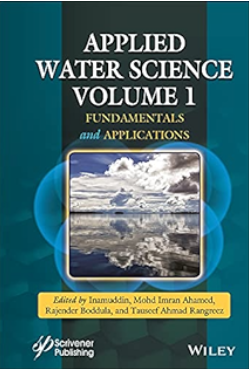摘要
锂(Li)、硼(B)等微量元素对人类社会发展具有重要的经济价值,在内源性盐湖盆地源区的河水中普遍富集。了解它们的来源和富集机制对盐湖资源的可持续开发和淡水资源安全至关重要。结果表明:源区河水水化学类型以HCO3-Ca、Cl-Na及其混合类型为主;河水的水化学成分主要受岩石-水相互作用的控制,蒸发的影响较小。相互作用的物质包括来自硅酸盐岩石和蒸发岩的岩盐、硫酸盐矿物和方解石。Li和B是流域河水中高富集的微量元素,空间分布相似,具有相同的自然来源。流域中的微量元素主要来自三个来源,包括第四纪沉积物中的岩石-水相互作用(PC1)、通过地热流体输入的深部岩浆(PC2)和永久冻土融化(PC3)。PC2在源区河水中主导微量元素富集(83.9%),控制Sr、U、B和Li。PC1主要调控Co、Ni、Cu、Ba和W (11.1%), PC3主要调控Cr和Pb(5.0%)。阐明了干旱区内陆性盐湖盆地源区河水中微量元素的主要来源、贡献及富集过程。Trace elements, such as lithium (Li) and boron (B), hold significant economic value for human community development and are commonly enriched in river water of the headwater regions of endorheic salt-lake basins. Understanding their sources and enrichment mechanisms is vital for both sustainable salt-lake resource exploitation and freshwater resource security. The Golmud River watershed, a typical hyper-arid endorheic basin on Tibetan Plateau, was investigated to explore the hydrogeochemical characteristics of river water in headwater regions of salt-lake basins, as well as the sources and enrichment mechanisms of trace elements. The results indicate that the hydrochemical types of river water in the headwater regions are predominantly HCO3-Ca, Cl-Na, as well as their mixed types. River water hydrochemical components are primarily controlled by rock-water interactions, with minor influence from evaporation. The interacting substances include halite, sulfate minerals, and calcite, sourced from silicate rocks and evaporites. Li and B are highly enriched trace elements in river water of the watershed, exhibiting similar spatial distributions, with the same natural origin. Trace elements in the watershed derive primarily from three sources, including rock-water interactions in Quaternary sediments (PC1), deep magmatic inputs via geothermal fluids (PC2), and permafrost thawing (PC3). PC2 dominates trace element enrichment in river water of the headwater region (83.9%), controlling Sr, U, B, and Li. PC1 primarily governs Co, Ni, Cu, Ba, and W (11.1%), while PC3 regulates Cr and Pb (5.0%). This work elucidates key sources, contributions and enrichment processes of trace elements in river water of the headwater region of arid endorheic salt-lake basins.

 求助内容:
求助内容: 应助结果提醒方式:
应助结果提醒方式:


